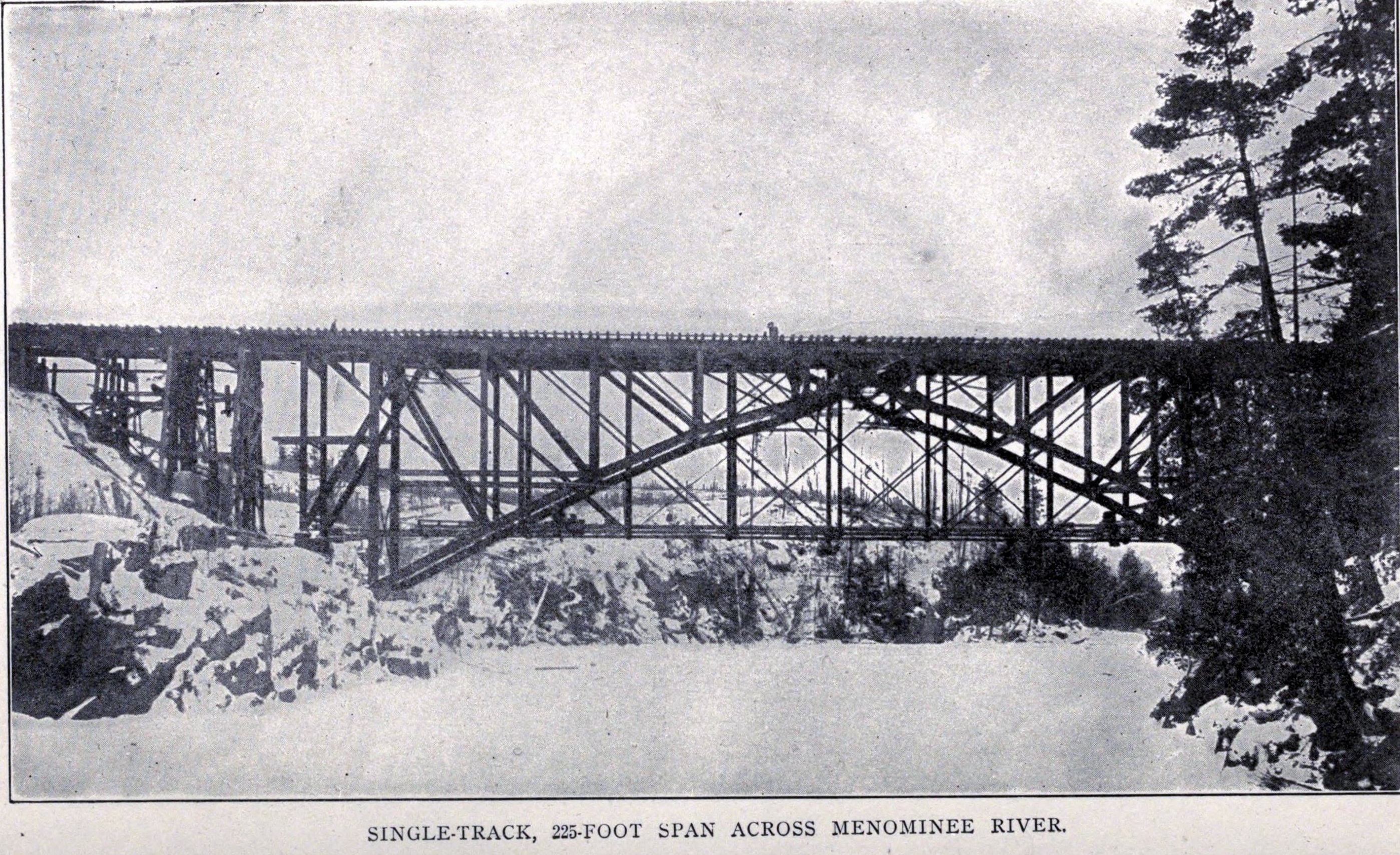Located near the village of Dunnville, this large structure is one of the most unique railroad bridges in Wisconsin.
The current bridge was initially built at several locations, before being moved here piece by piece.
The most unique span on the bridge was installed here in 1908. It consists of a 233-foot 6-inch 10-panel, pin connected Whipple Through Truss which was originally constructed as a 255-foot deck truss in 1885 at Kingsford, Michigan. When that bridge was replaced in 1902, the span was modified into the current through truss and reused here. At this time, it was also strengthened and several components were rebuilt.
The remaining steel spans were installed in 1928. The smaller truss span consists of a 103-foot 6-inch 6-panel pin connected Pratt Through Truss, fabricated in 1886 to cross the Wisconsin River at Spring Green, Wisconsin.
The deck girder spans were originally fabricated in 1881 for a bridge across the Fox River at Elgin, Illinois. While the girders on this bridge are twinned, it is unknown if the original Elgin bridge used twinned girders, or if this was done upon being moved here.

Historic photo of the Kingsford Bridge, showing the Whipple Truss in the background. From Types and Details of Bridge Construction, Volume 1 (1904); via Google Books
Currently, the bridge consists of:
24 Spans Trestle (Last renewed 1932)
2-84' Spans Twinned Deck Plate Girder (Built 1881 at Bridge #Z-100)
1-103'6" Pratt Truss Span (Built 1886 at Bridge #B-256)
1-233'6" Whipple Through Truss Span (Built 1885 at Bridge #U-464)
2 Spans Trestle (Last renewed 1935)
The entire bridge consists of concrete and timber substructures.
The author has ranked this bridge as being nationally significant, due to the unusually old age of the spans. In particular, the Whipple Truss is one of the most significant bridges in Western Wisconsin. Featuring vertical endposts and a heavily modified design, this truss is an unusual example of reusing a deck truss as a through truss.
A massive sandbar provides excellent views of this bridge. The photos are from a pair of days-a humid May 2012 morning and a crisp April 2015 evening.
| Upstream | Clairemont Avenue Railroad Bridge |
| Downstream | BNSF Chippewa River Bridge |
These Pictures Start at varying points in the Series
Detail Photos
